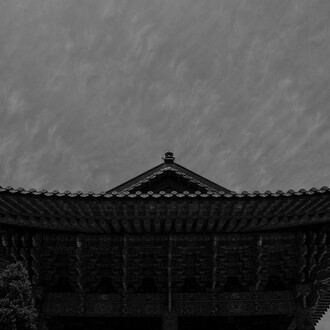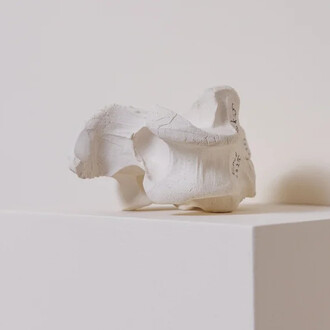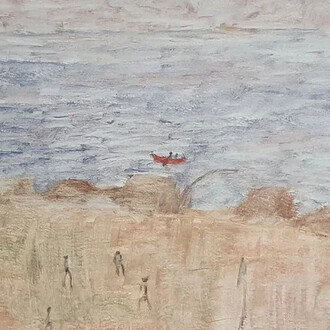Uffner & Liu is pleased to present Laterness, a two-person exhibition by gallery artists Pam Lins and Roger White. For the show, the artists will each present new bodies of work: a series of sculptures by Lins incorporating USPS flat-rate boxes, hand-made ceramic birds, ColorAid paper, and plaster models into assemblages that she likens to “modulated, abrupted scholars rocks;” White will display a suite of cut-and-dyed-paper collages that combine images of everyday life with abstract and textual elements concerned with framing the experience of time. The artists will also debut a multi-element collaborative work that combines their individual preoccupations into an unlikely, unstable whole.
The following is an excerpt of a dialogue between the artists about the show.
R: Let’s start with the title. Laterness—what is it? A theory, a condition, a mood…?
P: I proposed the title Laterness, and you countered with Laterness. We’d been reading David Joselit and Pamela Lee’s October essay, Six propositions after Trump’s second victory. In its exploration of the phenomenon of “late fascism,” the essay insists on the fact that the present is never autonomous.
R: It’s also cautiously optimistic about the ways that art could help us deal with this present: in reminding us of duration, or teaching us how to resist attention capture by sensationalist politics.
P: How about this—Laterness functions for us as a framework, a concept, and a method to consider the show. It’s 2025. The word suggests a sense of arriving after, while locating the past and present. It resists closure. It names a condition of temporal displacement.
R: It’s also hopeful (in the sense that there will be a later to now). Plus, I never feel more temporally displaced than when trying to get work done for an exhibition. Here’s a thought: The sculptures you’re showing have something to do with imperfection. Is this a critique? Of what? If not, what’s it about?
P: Maybe not a critique, but a determined decision. I’m thinking that how the work is made reflects the time it is built in. I made a decision here to build things by hand and with mostly what was in the studio, and to start fairly quickly or urgently. The work is sort of down-to-earth and pragmatic. And touching something by hand seems more sensible and, dare I say, emotionally democratic?
R: I’d agree with that—the time seems to call for deescalating the speed and scale of art production. Jump off the runaway motor carriage.
P: What about you—why is it important to make work "by hand" as the world is eroding around us? Can slowness be urgent also?
R: I think art can express something by not being that thing—so, if you want to explore the rapidly fragmenting present, strategies that invoke deliberation and cohesion might actually bring those aspects of the world into relief. What do you think a two-person show is?
P: Ha — we’ve put ourselves in a place for the work to be compared and contrasted, co-joined, negated, weighed, or syncretically scrutinized. Our show isn’t really bracketed by content or generation or media specificity. It seems to be more about how art is actually made, and how we relate to meaning. You seem to be challenging perception, and I’m juxtaposing materials and items. But you’re on the wall, and I’m on the floor. Being alone and being together.
R: We’re also both invested in humor and emotion and narrative as ways to cope with the intolerable conditions of the present.
P: Why aren’t there more two-person shows?
















